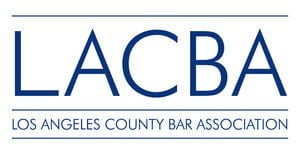
Graffiti is a rising form of art that has gained accolades as a form of expression among younger artists. Despite the praise given to said artists, the art itself is illegal when done under certain conditions or on public or private property without authorization from the owners. Graffiti is part of a long list of vandalism laws in place to protect property owners.
Vandalism Law
Section 594 of the California Penal Code is the guiding law against vandalism and graffiti. In general, a person is guilty of vandalism if they deface, damage, or destroy property, which is not their own. Part e) of this law explicitly defines graffiti as “any unauthorized inscription, word, figure, mark, or design, that is written, marked, etched, scratched, drawn, or painted on real or personal property.”
We have seen a lot of street graffiti with famous artists like Banksy making the news on occasion. Does this mean that every mural on a wall is illegal? Not exactly. The key to knowing when graffiti is legal or not lies in whether the artist had authorization from the owner before creating the work. It is not uncommon for property owners to permit art on their buildings. With this in mind, as long as artists seek authorization from owners, the graffiti on the wall is 100% legal.
Penalties for Vandalism
The punishment for vandalism mainly depends on three things; (1) the amount of damage done, (2) the criminal history of the defendant, and (3) the type of property involved in the case. For example, vandalizing a church or a health facility will likely carry more substantial penalties than vandalizing a home.
If the total damage amounted to less than $400, this could be a wobbler offense. A wobbler offense is when the prosecution can decide to apply either a misdemeanor or felony charges. As a misdemeanor, the defendant may face up to 1 year in county jail or a maximum of $1,000 in fines without a criminal history and $5,000 with priors.
On the other hand, if the prosecution goes for felony charges, a jail sentence can anywhere from 16 months to 3 years, and up to $10,000 in criminal fines without any priors. However, this figure could go up to $50,000 if the defendant possesses a criminal history.
In addition to these penalties, the court may also order the defendant to perform other tasks as part of their sentencing. These tasks may include cleaning the property or repairing any physical damage to the property.
Apart from the vandalism charges, the prosecution may also add more severe allegations to your crime, which will lead to sentence enhancements. For example, painting swastikas on Jewish property could be evidence of a hate crime. Tagging in gangs or tagging gang symbols could lead to gang sentence enhancements, where it can be proven that the defendant is affiliated with a particular gang.
Do You Have a Vandalism Criminal Charge? Contact Attorney Don Hammond
Criminal Defense Hero, Attorney Don Hammond, has been helping clients fight vandalism and criminal charges for years. Criminal Defense Hero is able to employ several defenses such as misidentification and negotiating for a penalty reduction. With a skilled lawyer such as Don Hammond to represent your case, you are bound to get the most favorable outcome. We have a 100% client satisfaction rate. Contact us through our website or reach out to us via +1 323 529 3660 for a first free consultation.









